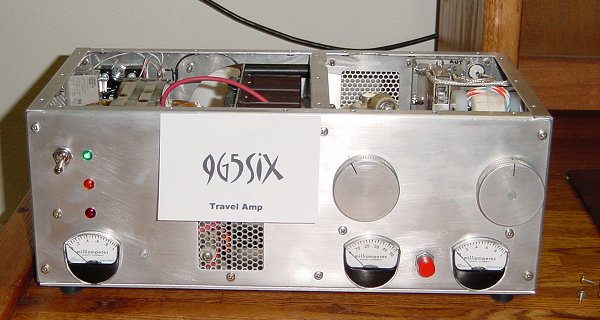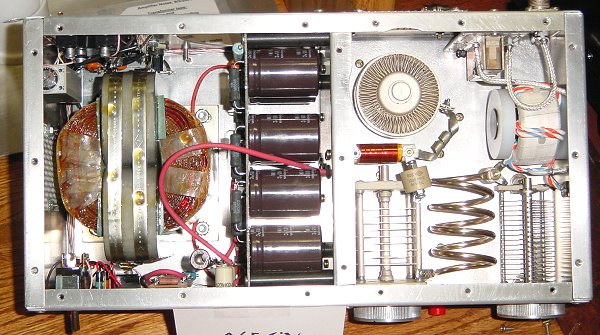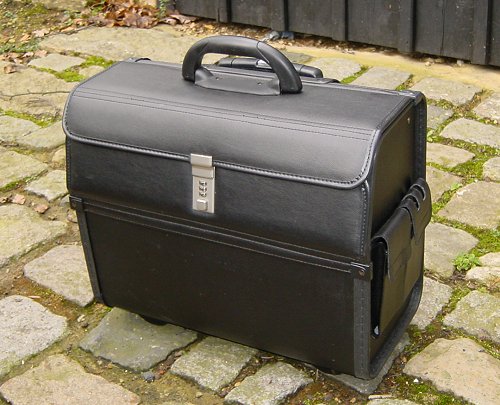50MHz DXpedition Amplifier
Overview
In 2000 and 2001 I was lucky enough to go to Ascension Island and the Falkland Islands (twice!) and I managed to take 6m equipment with me to operate from those rare locations. I had tremendous fun and enjoyed every minute. Following these successes, I made a decision to try and undertake a DXpedition of some sort every year - even if that meant me working fewer countries from home. We'll see whether I manage to achieve this ambition!
Although I had few problems, such as not being able to get a good SWR on the 5-element M2 antenna I took with me, one real problem that I suffered from very badly was to do with my amplifier. In 2000, I bought a well-known 350 watt solid-state amplifier to take with me to Ascension. However, as you no-doubt read in my previous write-ups, I suffered from lots of problems - it just didn't work when when I bought it! After getting it repaired, I took it on my second trip to the Falklands and it promptly blew up again within the first few hours leaving me without am amplifier. I was not exactly pleased after carrying all that way, complete with switching power supply!
I was also not that enthused when using it while on Ascension. The background noise wa very low on the island and every time I switched on the switching PSU I could here the background noise level rise just a little bit. I found this most annoying when when working weak cw pile-ups and I ended up turning it off and running barefoot.
Before I changed over to a valve design at the home QTH, I had run a 450-watt solid state amplifier on 6m for many years. I never really had any problems with it but I always had to be careful about the SWR and to check it before using. This worries me on a DXpedition as it is so easy to make a mistake in the rush to get on the air and explode the PA transistors. I have a feeling that was what happened in the Falklands in November 2001. It seemed to me that a valve was the right way to go for this design.
I thus became determined to build my own reliable valve-based DXpedition amplifier that I could take with me on my future trips. A valve is much more reliable and does not need to use a noisy switching PSU. In September 2001, I attended Jimmy, W6JKV's annual BBQ in Austin Texas and I had the opportunity to inspect and admire the amplifier built by Dick, K5AND for his 9G DXpedition. This inspired me to get thinking and building!

The amplifier Dick, K5AND built to take to 9G in 2001

An inside view of K5AND's 6m amplifier
The amplifier was really small, light and built around a 3CX800 valve and ran up to 800 watts with ease. The thing that I really liked was the transformer that seemed to me to be very small for its VA rating as this contributes most to the overall weight I was very impressed.
I was determined to have a go designing one with the following key objectives. It needs to:
- be as light-weight as possible to minimise excess baggage costs.
- be compact so that it can be transported as aircraft hand-baggage.
(As it turned out, the final amplifier weighed in at 39lbs compared
to the 70lb weight of the ACOM 1000!) - operate from either a 120 or 240 volt mains supply.
- be reliable.
- run up 1,500 watts for possible moon bounce operation subject to local licensing regulations.
- have full fault protection.
- be able to take the blower off in transit.
- be robust to resist damage it it gets dropped.
- be balanced with the weight distribution centralised so that it can be hand carried.
The first task was to buy carrying bag that could be used as hand baggage and of a suitable size to accommodate an amplifier. This determined that the maximum size could only be 165mm high, 410mm wide and 220mm deep. This seemed to be a pretty standard size so anyone else building the design should easily be able to obtain a similar one.

The pilots case which determined the overall size of the amplifier
In December 2001 I started to think about the design in detail and it was clear what the first challenge was to be!
